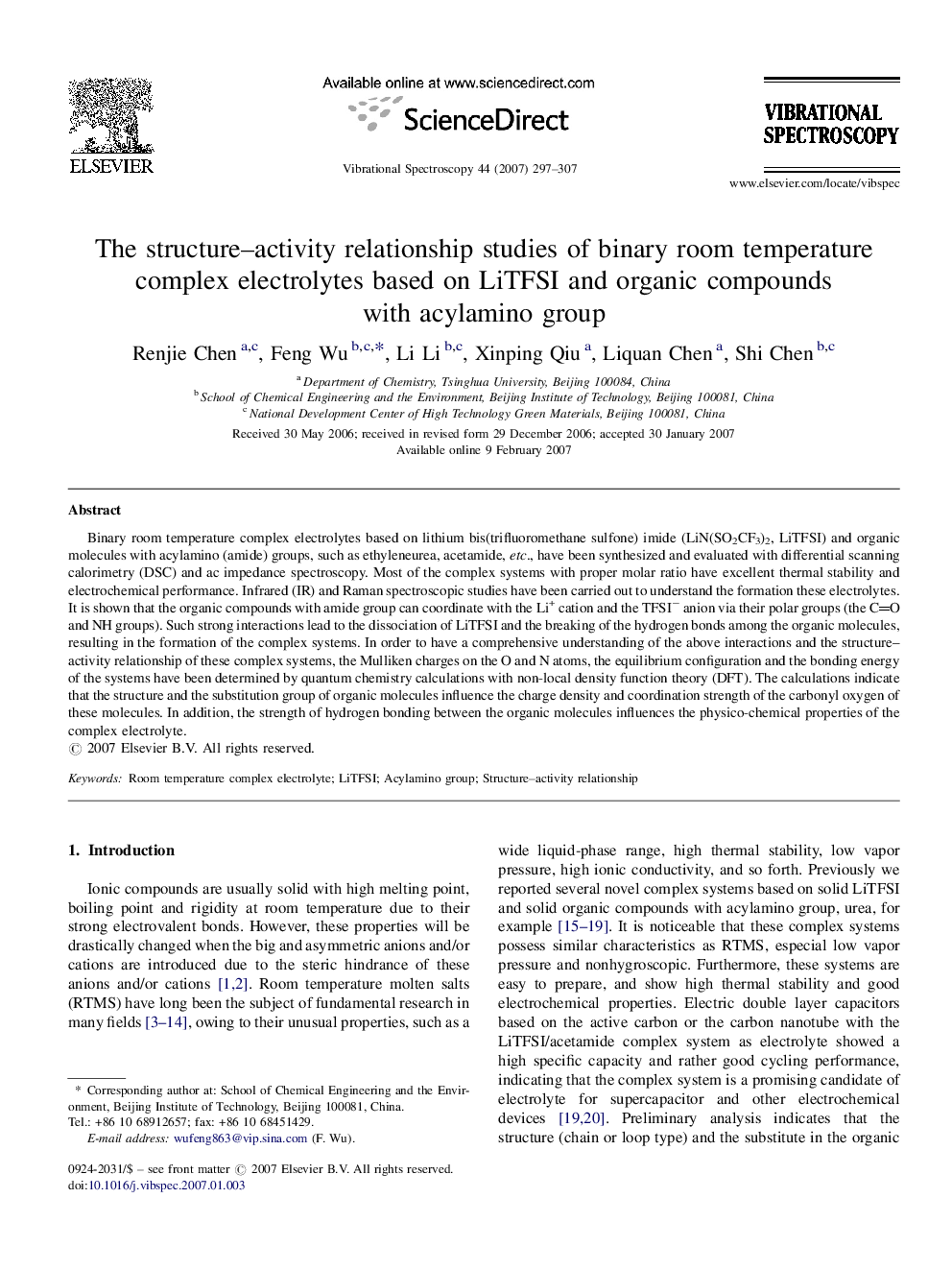| Article ID | Journal | Published Year | Pages | File Type |
|---|---|---|---|---|
| 1249807 | Vibrational Spectroscopy | 2007 | 11 Pages |
Binary room temperature complex electrolytes based on lithium bis(trifluoromethane sulfone) imide (LiN(SO2CF3)2, LiTFSI) and organic molecules with acylamino (amide) groups, such as ethyleneurea, acetamide, etc., have been synthesized and evaluated with differential scanning calorimetry (DSC) and ac impedance spectroscopy. Most of the complex systems with proper molar ratio have excellent thermal stability and electrochemical performance. Infrared (IR) and Raman spectroscopic studies have been carried out to understand the formation these electrolytes. It is shown that the organic compounds with amide group can coordinate with the Li+ cation and the TFSI− anion via their polar groups (the CO and NH groups). Such strong interactions lead to the dissociation of LiTFSI and the breaking of the hydrogen bonds among the organic molecules, resulting in the formation of the complex systems. In order to have a comprehensive understanding of the above interactions and the structure–activity relationship of these complex systems, the Mulliken charges on the O and N atoms, the equilibrium configuration and the bonding energy of the systems have been determined by quantum chemistry calculations with non-local density function theory (DFT). The calculations indicate that the structure and the substitution group of organic molecules influence the charge density and coordination strength of the carbonyl oxygen of these molecules. In addition, the strength of hydrogen bonding between the organic molecules influences the physico-chemical properties of the complex electrolyte.
